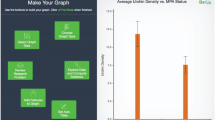Abstract
The INK-12: Interactive Ink Inscriptions in K-12 project, a collaboration between MIT and TERC, has been investigating the use of a pen-based wireless classroom interaction system in upper elementary math and science classes for the past 4 years [3]. This chapter reports on a study that investigated the ways in which a pen-based drawing tool could support 4th and 5th grade special needs students in learning multiplicative reasoning. The drawing tool is what we call a stamp, which enables students to draw an image, then duplicate the image to create a mathematical representation, e.g., four groups of six. We worked with a class of eight special needs students for 10 classroom sessions of between 45 minutes and an hour, using a structured sequence of multiplication and division problems. We identified several specific ways in which stamps helped the students gain more proficiency with multiplicative reasoning and based on pre- and post- assessments, saw evidence of their academic progress.
Access this chapter
Tax calculation will be finalised at checkout
Purchases are for personal use only
Similar content being viewed by others
Notes
- 1.
All student names are pseudonyms.
References
Fosnot, C. T., & Dolk, M. (2001). Young mathematicians at work: Constructing multiplication and division. Portsmouth: Heinemann.
Koile, K., Reider, D., & Rubin, A. (2010). INK-12: A pen-based wireless classroom interaction system for K-12. In R. Reed & D. Berque (Eds.), The impact of tablet pcs and pen-based technology on education: Evidence and outcomes. West Lafayette: Purdue University Press.
Rubin, A., Storeygard, J., … Koile, K. (2013). Supporting special needs students in drawing mathematical representations. In Proceedings of WIPTTE 2013.
Smith, S. P. (2003). Representation in school mathematics: Children’s representations of problems. In J. Kilpatrick, W. G. Martin, & D. Schifter (Eds.), A research companion to principles and standards for school mathematics (pp. 263–274). Reston: NCTM.
Woleck, K. R. (2001). Listen to their pictures: An investigation of children’s mathematical drawings. In A. Cuoco (Ed.), The roles of representation in school mathematics (pp. 215–227). Reston: National Council of Teachers of Mathematics.
Acknowledgments
This research is funded by NSF DRK-12 collaborative awards DRL-1020152 (Koile), DRL-1019841 (Rubin); many thanks to program officers Michael Haney and Robert Gibbs for their support. The authors gratefully acknowledge the contributions from the MIT CLP research group: Steve Diles, Claire DeRosa, Eryn Maynard, Jessie Mueller, and Kelsey Von Tish; Lily Ko at TERC; Katie Sawrey at Tufts; and David Reider at Education Design, Inc.
Author information
Authors and Affiliations
Corresponding author
Editor information
Editors and Affiliations
Rights and permissions
Copyright information
© 2015 Springer International Publishing Switzerland
About this chapter
Cite this chapter
Rubin, A., Storeygard, J., Koile, K. (2015). Supporting Special Needs Students in Drawing Mathematical Representations. In: Hammond, T., Valentine, S., Adler, A., Payton, M. (eds) The Impact of Pen and Touch Technology on Education. Human–Computer Interaction Series. Springer, Cham. https://doi.org/10.1007/978-3-319-15594-4_6
Download citation
DOI: https://doi.org/10.1007/978-3-319-15594-4_6
Published:
Publisher Name: Springer, Cham
Print ISBN: 978-3-319-15593-7
Online ISBN: 978-3-319-15594-4
eBook Packages: Computer ScienceComputer Science (R0)




